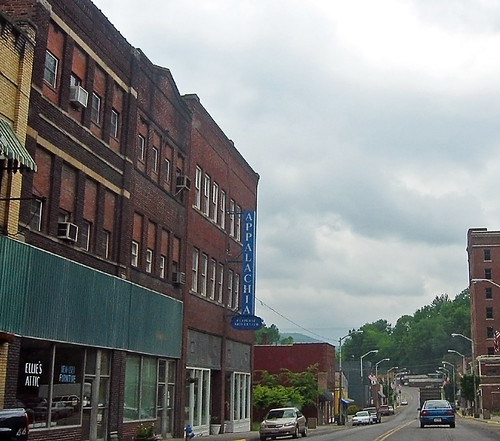 This week I’m going to be in Wise County, where Dominion Power is planning to build a $1.8 billion coal-fired power plant. Members of the Sierra Club, Appalachian Voices, Southern Appalachian Mountain Stewards and CCAN are putting on events around the meeting of the Air Board on Tuesday.
This week I’m going to be in Wise County, where Dominion Power is planning to build a $1.8 billion coal-fired power plant. Members of the Sierra Club, Appalachian Voices, Southern Appalachian Mountain Stewards and CCAN are putting on events around the meeting of the Air Board on Tuesday.
There’s been a lot of talk about the old ways here in Appalachia. Today is the first day of my trip to Wise County to see what we’re fighting for, to get to know the people who are fighting in this community to stop this plant and to attend tomorrow’s Air Board meeting, where they will decide whether or not to grant Dominion’s final permit.
We started the day by helping the Clinch Coalition build a trail in Jefferson National Forest. The forest is a glorious example of the Appalachian eco-diversity. Hickory, Red Oak and Beech gave way to rhododendron and hemlock. Hemlock is rare these days because of a small beetle, the woolly adelgid, which has infested large numbers of hemlock stands in Virginia. But these hemlock were free from infestation, as was the forest in general. There are few invasive species there, even though the roads and more populated trails have numerous examples of invasives like kudzu. The rhododendrons were still in bloom, and as we looked out over the vista of mountains and deep forest, the scars from mountain top removal mining were clearly in view.
A quarter of this county has been destroyed by mountain top removal mining. We visited black mountain with Larry Bush, whose family has been living there for generations, and we witnessed the intense scarring that mountain top removal mining cuts into this landscape. Miles of land, where a mountain once stood, was leveled, barren and destroyed. Continue reading


 This week I’m going to be in Wise County, where Dominion Power is planning to build a $1.8 billion coal-fired power plant. Members of the Sierra Club, Appalachian Voices, Southern Appalachian Mountain Stewards and CCAN are putting on events around the meeting of the Air Board on Tuesday.
This week I’m going to be in Wise County, where Dominion Power is planning to build a $1.8 billion coal-fired power plant. Members of the Sierra Club, Appalachian Voices, Southern Appalachian Mountain Stewards and CCAN are putting on events around the meeting of the Air Board on Tuesday.


